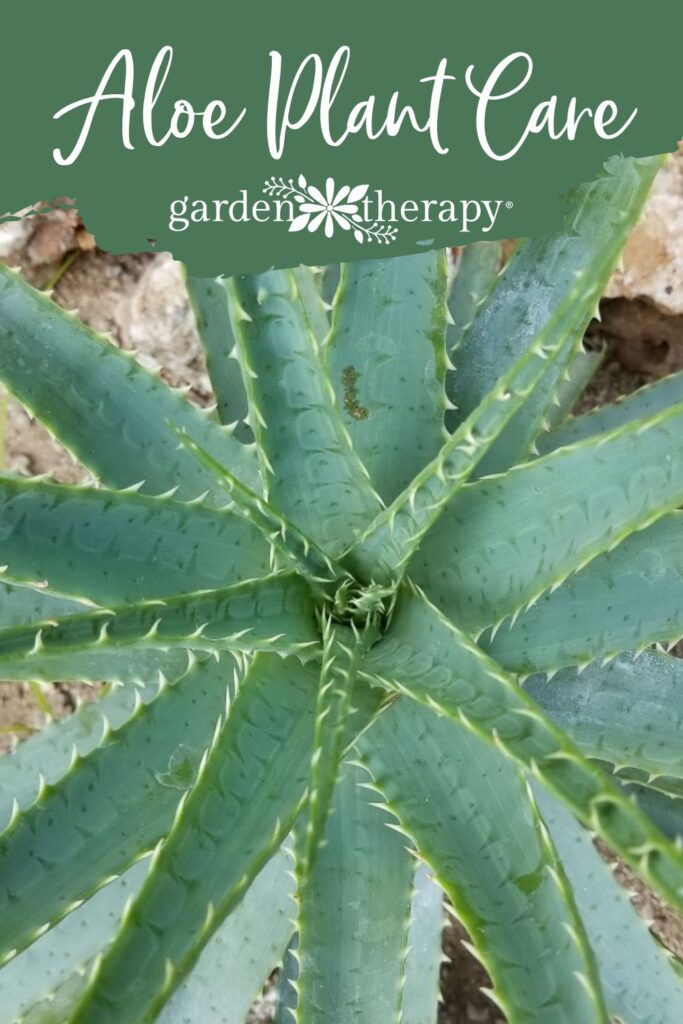Aloe vera is one of the best houseplants and ornamentals to grow. Not only do they add a pop of green with their thick, fleshy leaves, but they also are a wonderful medicinal plant to have handy. To make sure you get the most out of your plant, follow these aloe plant care tips!

While I focus most of my time outside and in the garden, there are a few houseplants I hold near and dear to my heart. Of course, the aloe vera is one of them.
Most of the time, we grow houseplants for their beauty and to add a touch of life inside for year-round green. However, most houseplants don’t provide us with many of the healing properties that I love so much about my outdoor plants.
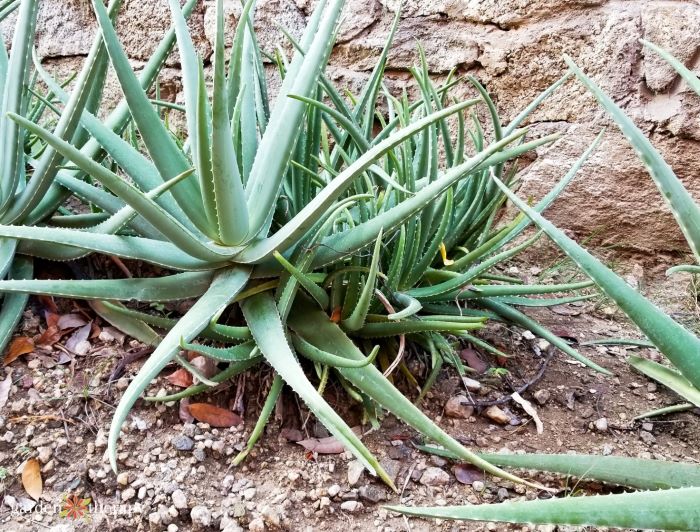
But the aloe vera is the best of both worlds. Very easy to grow and take care of, aloe vera is one of the first plants I recommend that herbalists grow. Its fleshy green leaves provide amazing benefits to the skin when applied directly. And some climates can even grow it outside!
Enjoy the beauty of this plant all while keeping it handy for when you need it the most.
This post will cover…
- Aloe Vera Uses
- Types of Aloe Plants
- Aloe barbadensis
- Aloe cameronii
- Aloe aristata
- Aloe polphylla
- Aloe maculata
- How to Care For An Aloe Vera Plant
- Indoor Aloe Vera Plant Care
- Outdoor Aloe Vera Plant Care
- Frequently Asked Questions About Aloe Plant Care
- More Plant Care Guides
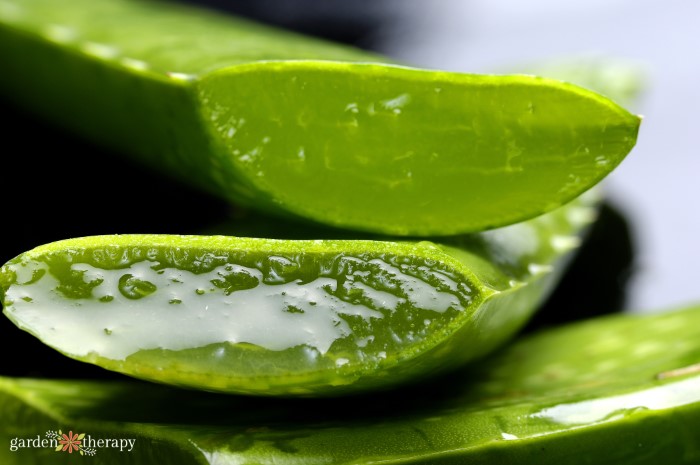
Aloe Vera Uses
Aloe vera is actually one of the world’s oldest plants known for medicinal uses. While native to eastern and southern Africa, you can now find it in most corners of the world as it’s a highly adaptable plant.
People use aloe vera most as a skin-healing plant. It’s anti-bacterial and antiseptic, killing bacteria and fungi to clean cuts and wounds. The pH level of the plant matches our skin to help cleanse it. For this very reason, I used it in one of my hand soap recipes.
Some even use aloe vera as a laxative and digestion aid. And boy, does it work well! Be careful as it can get too effective at times and cause intestinal cramping and griping.
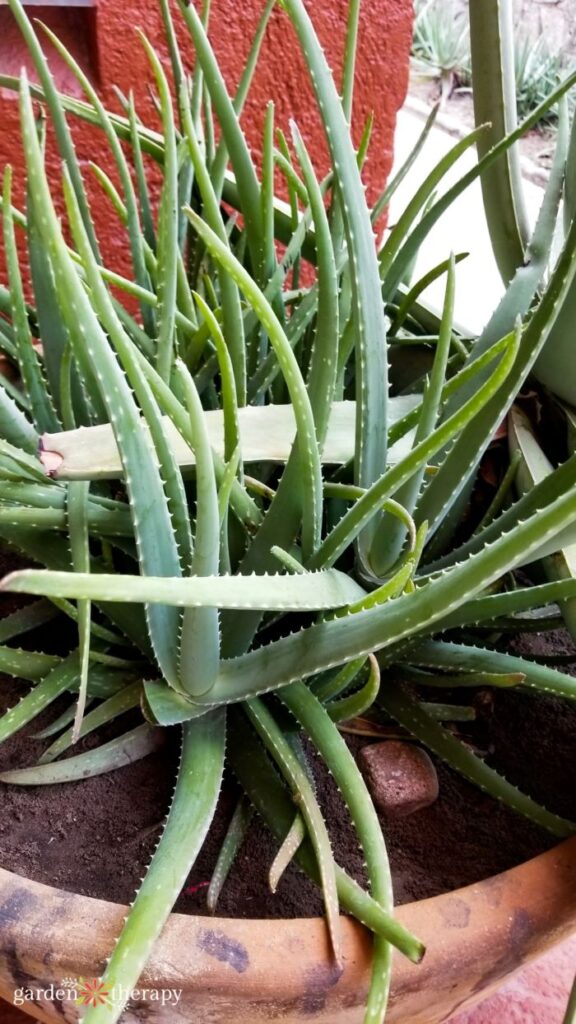
But of course, everyone knows the aloe vera as your best friend after a day out in the sun by reducing inflammation and pain from sunburns. Even the most diligent sunscreen wearers like myself can get a little pink after a day out at the beach. The plant is most potent when applied directly from the plant.
You can see just how I use aloe vera to treat sunburns and all the other properties of the plant in my aloe vera herbal guide.

Types of Aloe Plants
Every type of aloe will have some different care requirements, but for the most part, they all are low-maintenance beauties. Here are some of the most popular types of aloe you might encounter.
Aloe barbadensis
When you refer to aloe vera, you’re referring to the Aloe barbadensis. This is the main plant I’ll be talking about today. It’s the most common aloe plant used for skincare and ingesting as it’s packed with all the herbal benefits listed above. Grow this plant to use for your sunburns and other medicinal uses.
To identify it, look for whitish spots on the leaves that disappear as the plant ages. It also has serrated edges and yellow flowers when in bloom.
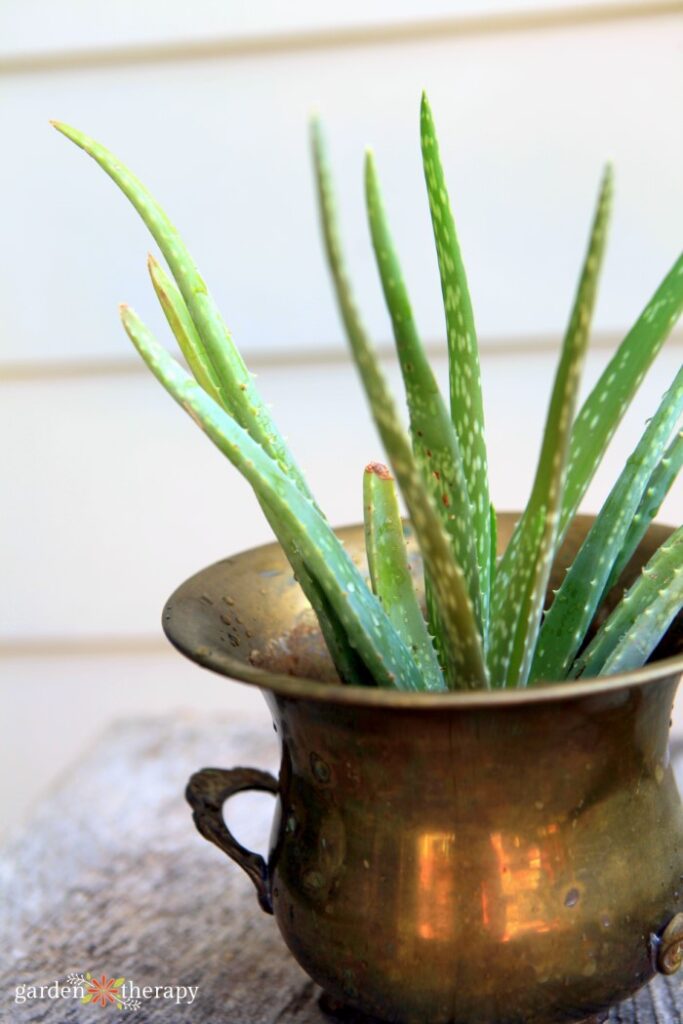
Aloe cameronii
One of the most popular ornamental aloes is the Aloe cameronii. A little more wild and spindly looking, it has long and curving serrated leaves. The leaf colour depends on the amount of sun and water it gets, but most people grow it to get the brilliant red copper colour. You may also see red-orange flowers blooming in the late fall.
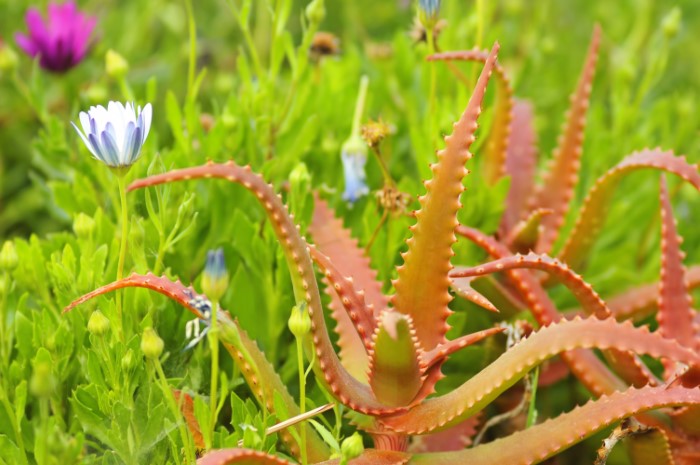
Aloe aristata
Also known as the lace aloe, many people grow this type of aloe for its compact shape and unique-looking leaves. The tufted leaves have lacy white edges, tiny teeth, and small white raised dots.
Depending on the light, it can be pale to dark green. It grows in clumps and can produce red-orange flowers.
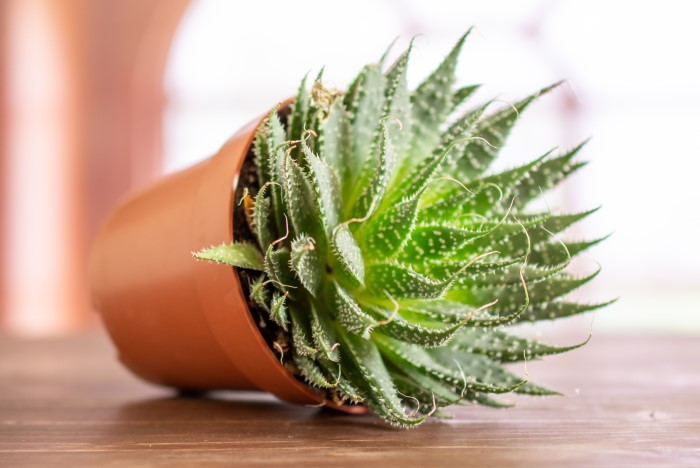
Aloe polphylla
If you want to grow an aloe with a wow factor, grow the Aloe polyphylla. Known as the spiral aloe, it creates amazing visual interest in the garden as it forms a spiral shape. The leaves are fleshy, triangular in shape, and serrated. While it doesn’t bloom often, you may see salmon-pink flowers on it.
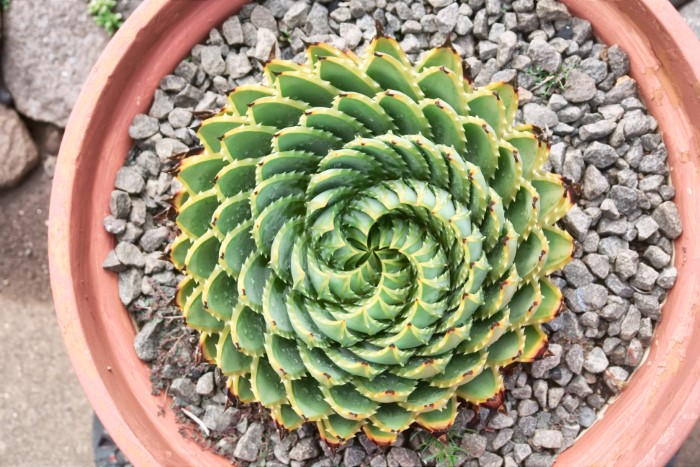
Aloe maculata
You can identify this aloe by the distinctive white spots on the leaves and edges. A low-growing ornamental, it also produces red tubular flowers. Some call this type of aloe the soap aloe as locals would use the plant to make a soapy lather in water.

How to Care For An Aloe Vera Plant
While fairly easy to care for, you still want to give your aloe vera the best growing conditions possible to get a healthy, big plant. This way, you can harvest from it often and use it to treat your sunburns.
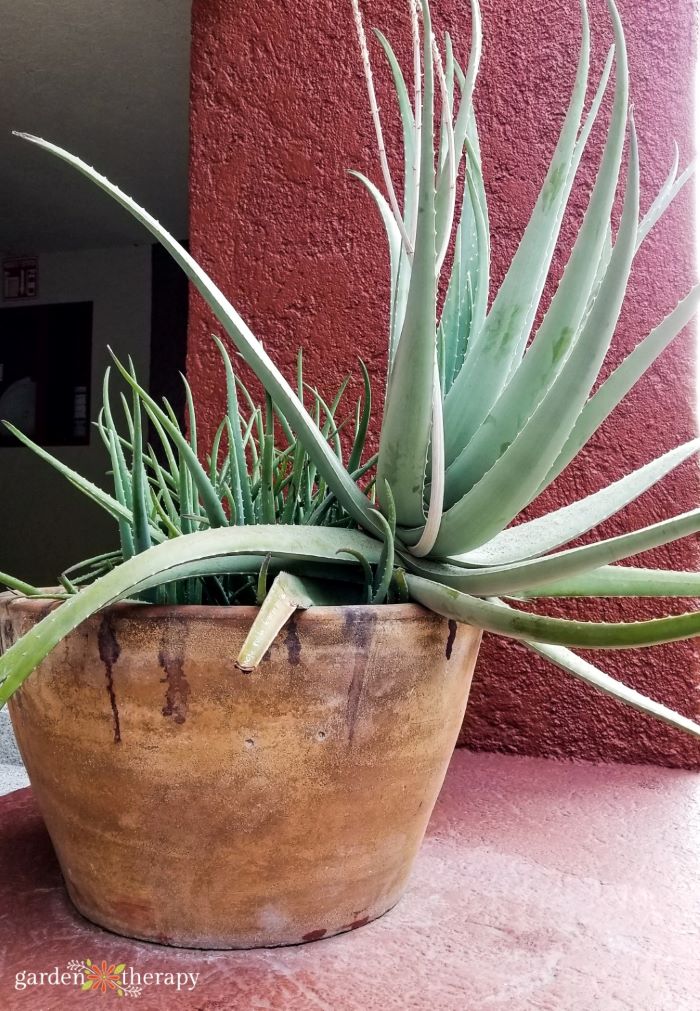
Indoor Aloe Vera Plant Care
Treat your indoor aloe vera plant like any other indoor succulent or cactus. The main difference in care is that aloe vera tends to be more tolerant of low light. It likes bright indirect light. Too much direct light can make the leaves dry out and turn yellow. Instead, keep it in a sunny room away from the window and glass.
Aloe vera plants enjoy well-draining soil made of equal parts potting soil and sand. When the soil stays moist all the time, it can lead to root rot which can be identified by brown or limp leaves.
To avoid root tot, don’t ever let the aloe vera sit in a saucer of water. Water every couple of weeks. When watering, give it a thorough drink and then let it dry out completely before watering it again.
The plant enjoys tight spaces since it has shallow roots. You will want to put it in a pot just big enough that the plant doesn’t tip over from its weight.
Aloe vera plants often produce offshoots from the parent plant that you can easily propagate and put in a new pot.
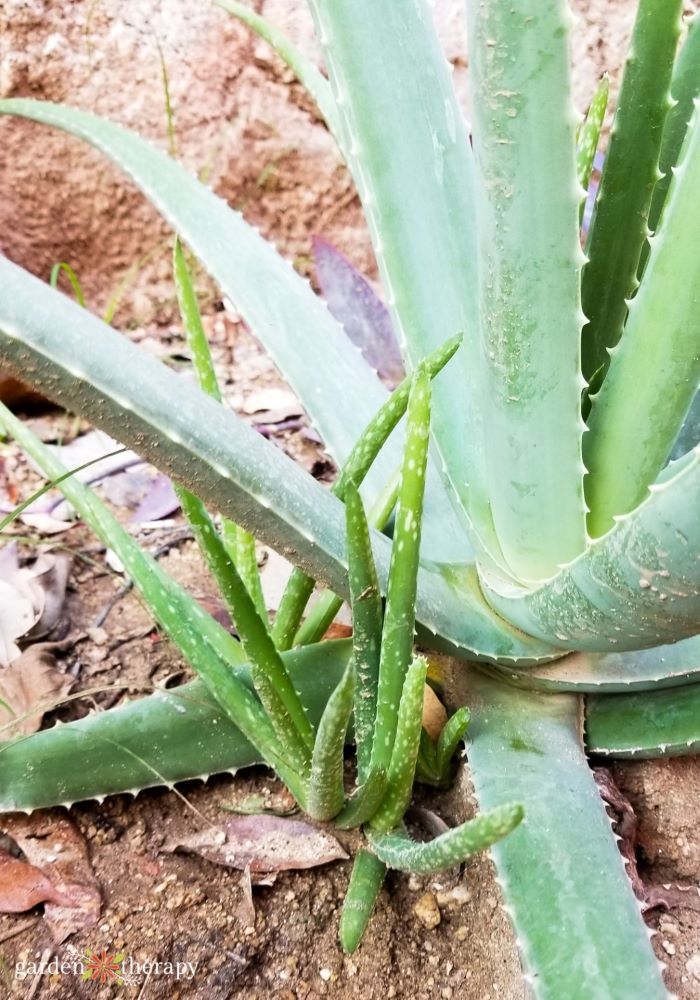
Outdoor Aloe Vera Plant Care
Outdoor aloe vera plants thrive in hot, humid climates and are considered fairly drought tolerant. They’re hardy up to -2°C and 28°F, or zones 8-11.
Aloe vera plants need well-draining soil with lots of organic matter. They hate having wet feet, where the soil stays wet for long periods of time. Before planting, make sure to mix in a healthy dose of compost with the soil, especially if you have clay or boggy soils for better drainage.
Outdoors, plant your aloe vera in part shade or direct sun. While they are tolerant of shade, too much of it makes the soil for the aloe vera too wet and the plant more suspectable to pests and diseases.
If you grow an aloe vera outside in a container, use a well-draining potting mix and water more frequently. In a pot, they are more prone to getting burnt from the sun.
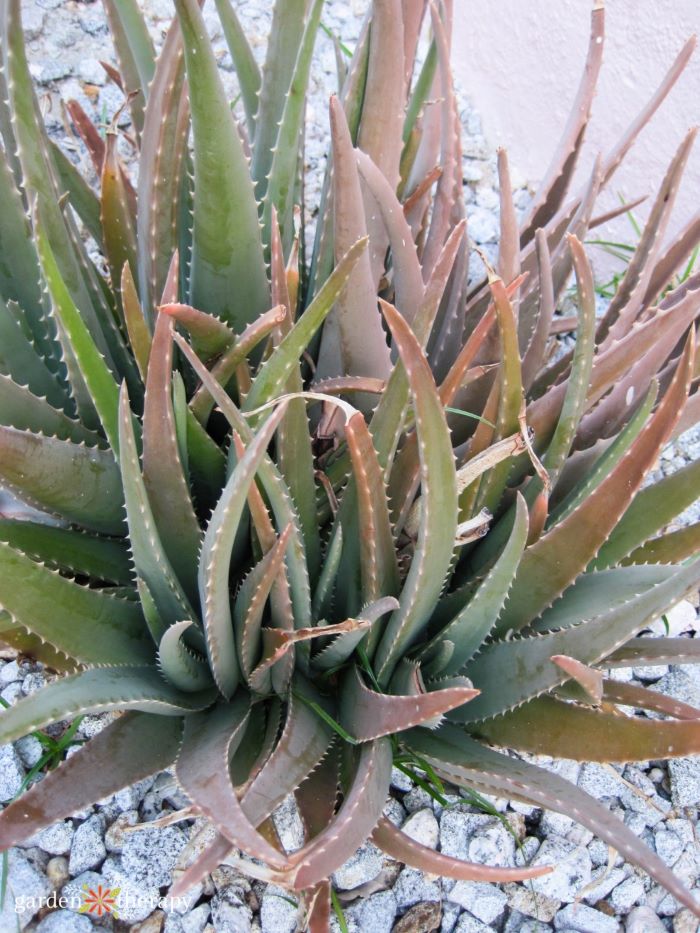
Frequently Asked Questions About Aloe Plant Care
Brown tips indicate that the plant is either not getting enough water or is receiving too much sun as an indication of burning. Aloe vera plants prefer bright, indirect sun.
However, be wary of overwatering as it can quickly lead to root rot. If the plant has limp brown leaves or black spots, it’s a sign of overwatering.
You can certainly cut off brown tips or browning leaves. This indicates that that part of the plant is dead and cutting it allows you to direct the plant’s energy to the parts that are still growing and green. The cut tip will seal on its own.
Aloe vera plants may be shade tolerant, but they still require six hours a day of bright indirect light. If it doesn’t get enough sun, the soil may stay moist for too long causing root rot. The stems can also grow weak and make the plant more susceptible to pests and diseases.
Aloe vera plants can get top-heavy as they grow bigger. Since they like shallow pots, you won’t need to repot your plant until it physically starts to fall over. You can also repot the plant if the soil is in need of a refresh or there are too many offshoots.
Once you cut a leaf, that same leaf won’t regrow. However, the plant will continue to produce new leaves to replace it. When harvesting an aloe vera, take the older outer parts of the plant first. If you find yourself in need of a new plant, propagate it with one of the little offshoots.
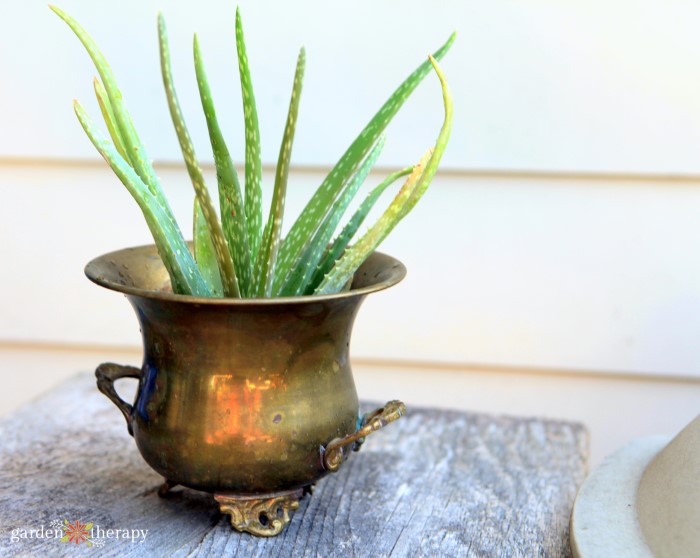
That covers everything there is to know about aloe vera care! If you have any more questions, feel free to leave them in the comments down below.

